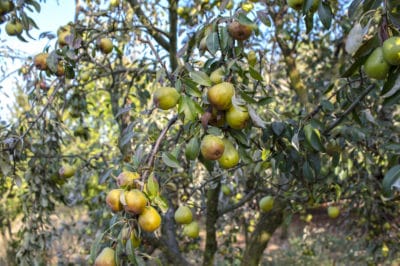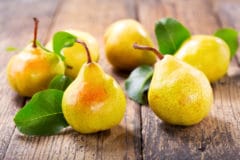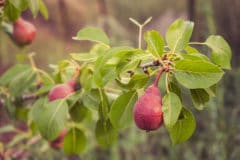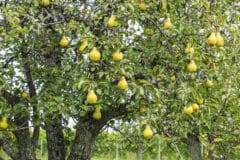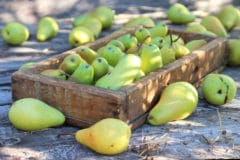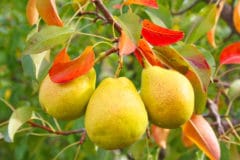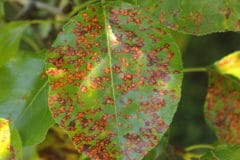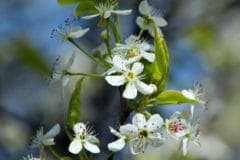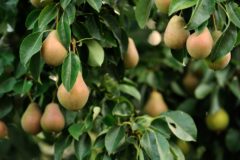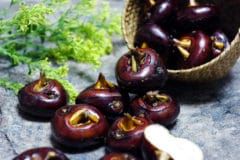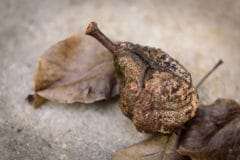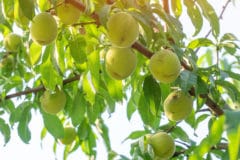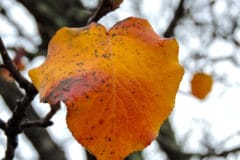Origin
The oldest known evidence of pears exists in fossil records dating to prehistoric times. They are found in prehistoric pile dwellings around Lake Zurich in Switzerland. Celtic and Slavic languages all have words for the pear, and it is unclear when conscious cultivation of this fruit began. Chinese records indicate they’ve been cultivating pears for up to 3000 years.
The genus is believed to have originated in Tian Shan of Central Asia. From here it spread along mountain ranges. Today’s European pears are thought to have been cultivated from one or two wild varieties.
Pioneers brought cultivated European pears to the new world with colonists. Diseases killed many pear trees that naturalized in the Eastern U.S. Those that made it to the Pacific Northwest found ideal conditions. This is where much of the nations pear production happens today.
Modern Pear Production
While it pales in comparison to the worlds apple production, pears are still a hot global commodity. 26 million tonnes of pears are sold annually. About 70% of that production comes from China. Countries making up the difference include the E.U., Argentina, and the U.S.
Three species of pear make up the majority of the world’s market.
- European Pear – Pyrus communis is what most westerners know as a pear with a ‘pear shape’ and soft sweet fruit.
- Chinese White Pear – Pyrus × bretschneideri is popular in the east, this is a hybrid of the Asian pear with softer fruit.
- Nashi Pear – Pyrus pyrifolia is also known as an asian pear or apple pear.
Climate and Growing Conditions
Pear trees prefer cool and temperature climates. They inhabit all temperate regions of the world but are considered native to the old world continents of Asia and Europe. If you live in USDA zones 4-8, you can find a variety of pear that will thrive in your yard. Different varieties are more suitable for cooler, warmer, wetter, or drying climates within these zones.
When choosing a pear tree to plant, take into consideration the rootstock the tree is on for size and adaptation to your region. Think about disease resistance and whether that is something you need to be concerned with.
